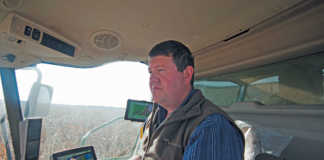As with all food-producing farm animals, the reproduction rate and speed of growth in commercial pigs has been increased through selection, feeding and management. The modern sow is expected to produce four times as many piglets as her ancestors could in their natural habitat. But this improved performance has its disadvantages.
The mortality rate of piglets is high, as they’re born tiny, nearly hairless, and short of iron and energy, with no inherited immunity and a careless mother. Piglets are most likely to die in the first three days after birth, but you can keep the mortality rate down by knowing and tending to their needs:
Sufficient air
Help the sow to farrow if she has trouble doing so. Clear the membranes from the piglet’s face, and rub it if it’s not breathing.
Warmth and comfort
Supply a creep area next to the sow with a thick bed of straw, hay and/or newspaper.
Energy and fluids
Help weak piglets to find teats. Put a few drops of glucose water in the mouth for energy and then near a teat. Foster-rear the stronger piglets when the sow can’t cope.
Protection against diseases
Vaccinate the sow against E. coli two weeks before farrowing. Give all piglets colostrum in the first six hours.
Protection from crushing by the sow
Use a farrowing crate or rail and a deep soft bed that gives piglets a chance to escape if there’s no attendant.
Supplementary iron to prevent anaemia
Inject 200mg of iron before six days old.
Abundant milk until weaning
Ensure that the sow has at least 6kg of fresh, balanced feed (lactating sow or grower meal) per day, and more if she can eat it. Give it up to 40â„“ of water per day.
An introduction to solid food
Give piglets small quantities of high protein creep or weaner feed daily during the last 10 days of weaning. They should finish it in less than an hour.
Routine procedures
Disinfect the navel and feet with an iodine dip or wound spray on day one. Castrate male piglets at three to four days old, but only if the market demands it, or if you know the male pigs are going to be six months or more at slaughter. Cutting teeth is ineffective and short tails don’t prevent tail biting.
The right treatment for scours or other problems
Discuss medication with your veterinarian, and keep a small range of effective drugs on hand with instructions on their use. Source: Pigs for Profit: A Manual for Emerging Pig Farmers in South Africa, by Dr Jim Robinson and Dr Mary-Louise Penrith, published by South African Pork Producers’ Organisation (SAPPO). For more information call Qeda Nyoka, SAPPO project manager for emerging farmers, on 072 338 2369.













